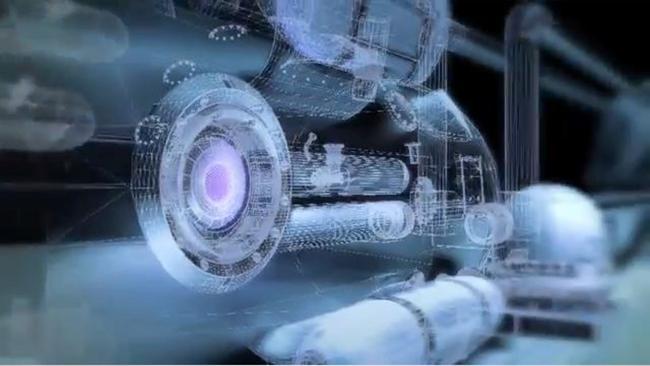German scientists achieve ‘landmark breakthrough’ in nuclear fusion
GERMAN scientists have announced a breakthrough that could make our energy a whole lot cheaper in future — if they can make it stable.

GERMAN scientists say they have reached a milestone in a quest to derive energy from nuclear fusion, billed as a potentially limitless, safe and cheap source.
The success comes as a culmination of a nearly two decade project
Nuclear fusion entails fusing atoms together to generate energy — a process similar to that in the Sun — as opposed to nuclear fission, where atoms are split, which entails worries over safety and long-term waste.
German engineers change the world today. 12/10/15 will go down in history books. Nuclear fusion is on the brink of changing the world
— Alden Truesdale (@AldenTruesdale) December 10, 2015After spending a billion euros ($A1.5 billion) and nine years on construction work, physicists working on a German project called the “stellarator” said on Thursday that they had briefly generated a super-heated helium plasma inside a vessel — a key point in the experimental process.
“We’re very satisfied,” said Hans-Stephan Bosch at the Max Planck Institute for Plasma Physics in Greifswald.
“Everything went according to plan.” For all its promise, nuclear fusion has proven elusive and highly costly to achieve.
The idea is to heat atoms to temperatures of more than 100 million degrees, so that their nuclei fuse.
During nuclear fusion in a star, hydrogen is fused into helium. pic.twitter.com/Nq9orov5re
— Science (@ScienceAllDay) December 10, 2015The fusion would take place in a special vacuum chamber where the atoms, in a hot ionised gas called a plasma, are held floating in place by superconducting magnets, so that they do not touch the vessel’s cold sides.
The German experiment, using a machine called Wendelstein 7-X, was aimed at seeing whether it was possible to heat helium atoms with a microwave laser and to briefly contain the plasma within the vessel.
The first plasma in the 16-metre-wide machine, from one milligram of helium gas heated by a 1.8-megawatt laser pulse, lasted one-tenth of a second and reached a temperature of about one million degrees, the institute said in a press release.
The team will next try to extend the duration of the plasma and to find out the best way of producing it.
Next year, it hopes to switch over to hydrogen, the actual target of the study, as opposed to helium.




